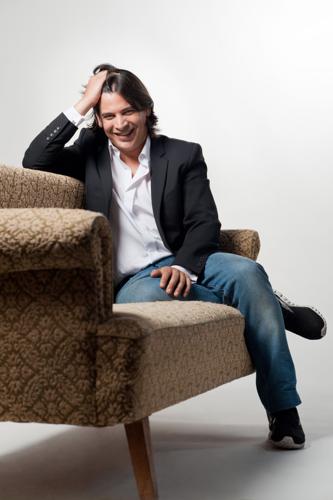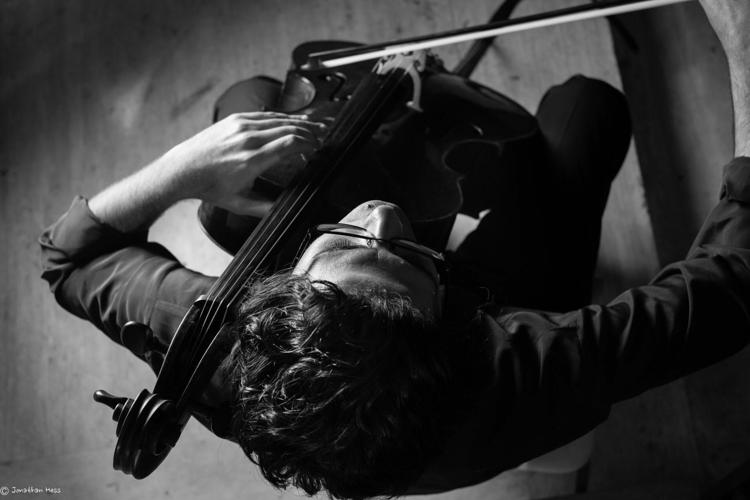Throughout the 2015-16 Tucson Symphony Orchestra season, we are featuring conductors vying to become the next TSO music director.
Who: José Luis Gomez, 37, who earlier this year ended his tenure as principal conductor of Italy’s Orchestra 1813 Teatro Sociale di Como, which he led from 2012 through the 2014-15 season. He is without an orchestra and has been guest-conducting around the world since early summer.
Bio at a glance: The Venezuelan-born, Spanish conductor grabbed international attention in 2010 when he won first prize in the Sir Georg Solti Conductor’s Competition in Frankfurt, Germany, with a rare and sensational unanimous decision from the judges. That led him to land a created-for-him post as assistant conductor of the Frankfurt Radio Symphony Orchestra.
Since then he has been the guest conducted with orchestras around the globe including RTVE National Symphony Orchestra (Orquesta Sinfónica de Radio Televisión Española) of Madrid, the Hamburg Symphony, National Arts Centre Orchestra of Ottawa, Canada, and a number of American ensembles including Houston Orchestra, Grand Rapids Symphony and the Elgin Symphony Orchestra.
People are also reading…
TSO record: He made his TSO debut in October 2014 conducting violinist Chee-Yun in the Tchaikovsky Violin Concerto. Also on that program was Carl Nielsen’s Symphony No. 2 “The Four Temperments” and Grieg’s “Norwegian Dances,” two works that the orchestra had never played before.
Something you’ve come to know about the Old Pueblo: “What I found the first time I came to Tucson, apart from wonderful warm weather since I was coming from really cold Europe, was a fantastically in-shape, good ensemble. … Sometimes I try to push a little bit of the boundaries in terms of what I want to present myself and I think Nielson (Symphony No. 2) was kind of a challenge for me to find an orchestra that can have its language and enthusiasm from day one. And they did have it. The concert I think was really thrilling in all these terms. So I have very good memories of the musicians and their willingness to explore new possibilities and I am very fascinated about the way they played.”
Fondest memory of past experience: “I was really surprised that you had this very high mountain” — Mount Lemmon — “that got to almost 7,000 feet. The nature that I saw was wonderful. I know in the desert of Arizona there is all these wonderful landscapes, but I didn’t know that so close to Tucson I would get to see the change of not only the weather but also the vegetation and landscape. It was really interesting.
“One of the things that I liked was that it was lively in terms of the young people around. I walked around where my hotel was (downtown) and it was really interesting to see a lot of young people around. In terms of audience you want to get the young people involved.”
Overall conducting philosophy: “Sometimes conducting an orchestra is like riding a horse. You have to let the horse trust you, but you also have to trust the horse. At the moment it has to jump, you have to let it go. So in a way conducting an orchestra is this relationship between leadership but also trusting the musicians you have in front of you to let them also express themselves for the musicians that they are. It’s kind of the wrong use of the word to have a conductor called a ‘maestro,’ like a teacher. There’s nothing to teach in the music. There’s only to express together, make music together and to try to convey all those ideas in one wonderful idea between that many people. A conductor for me should be in the middle, never on the podium.”
Something we should know about you before show time: “I still have long hair. I haven’t cut my hair yet. … One of the things I would like people to be aware of when I’m there is just to enjoy the ensemble that they are very lucky to have.”
About your program: “It’s a very interesting program indeed that we’ve put together that happens to have a cellist that plays with the Casals cello. ... It’s a wonderful cello concerto by Elgar, but when you add the fact of it being played on Pablo Casals’s cello, it adds an exciting element to it, which is something very wonderful. ... It’s going to be very exciting and in combination with the other pieces … the Schumann and the Mendelssohn … it works very well. I’m very much looking forward to it.
“What I would like to achieve in October is to try to cherish the sound of the orchestra, which was something that was really into my mind and remained in my mind.”















